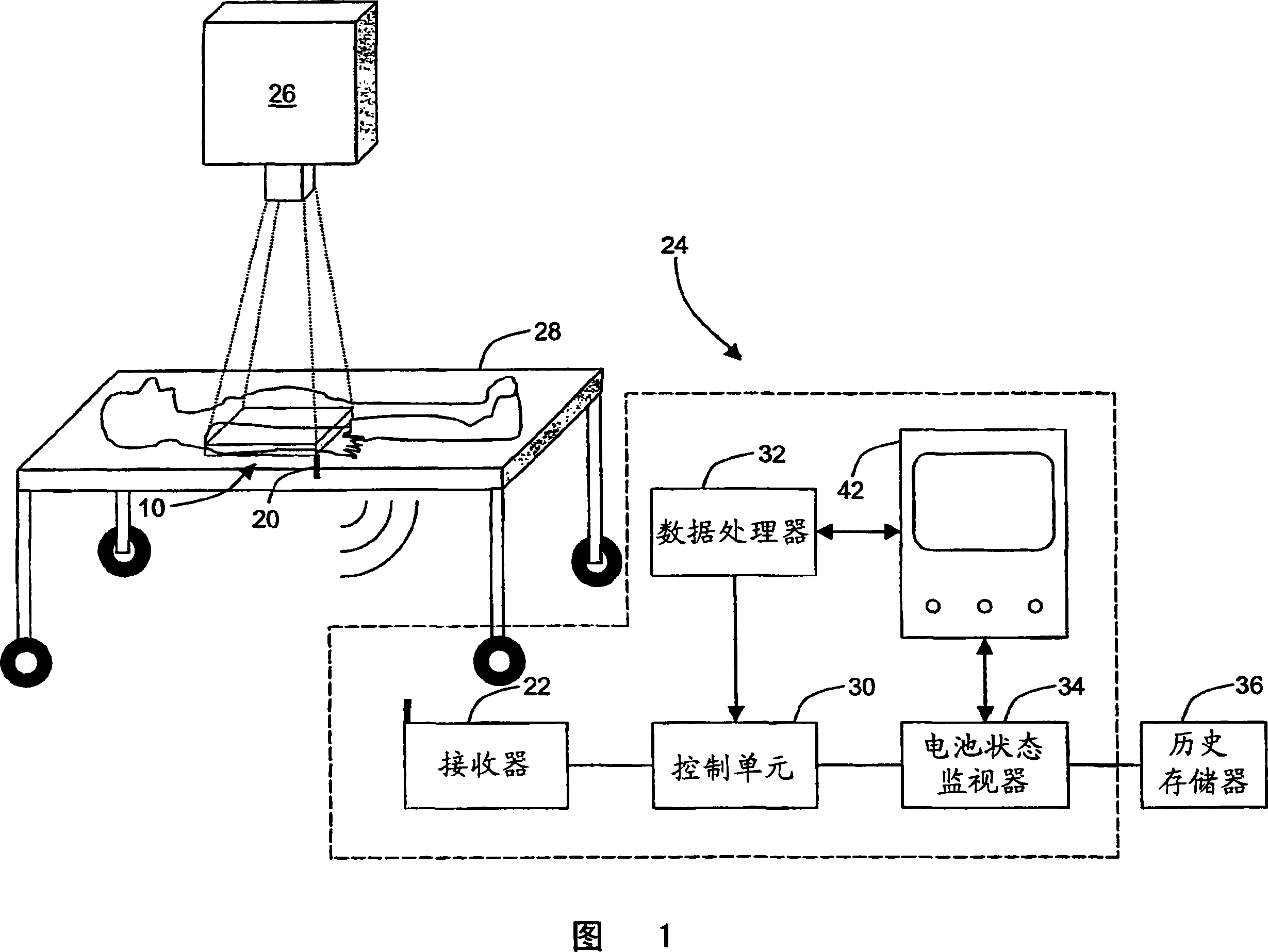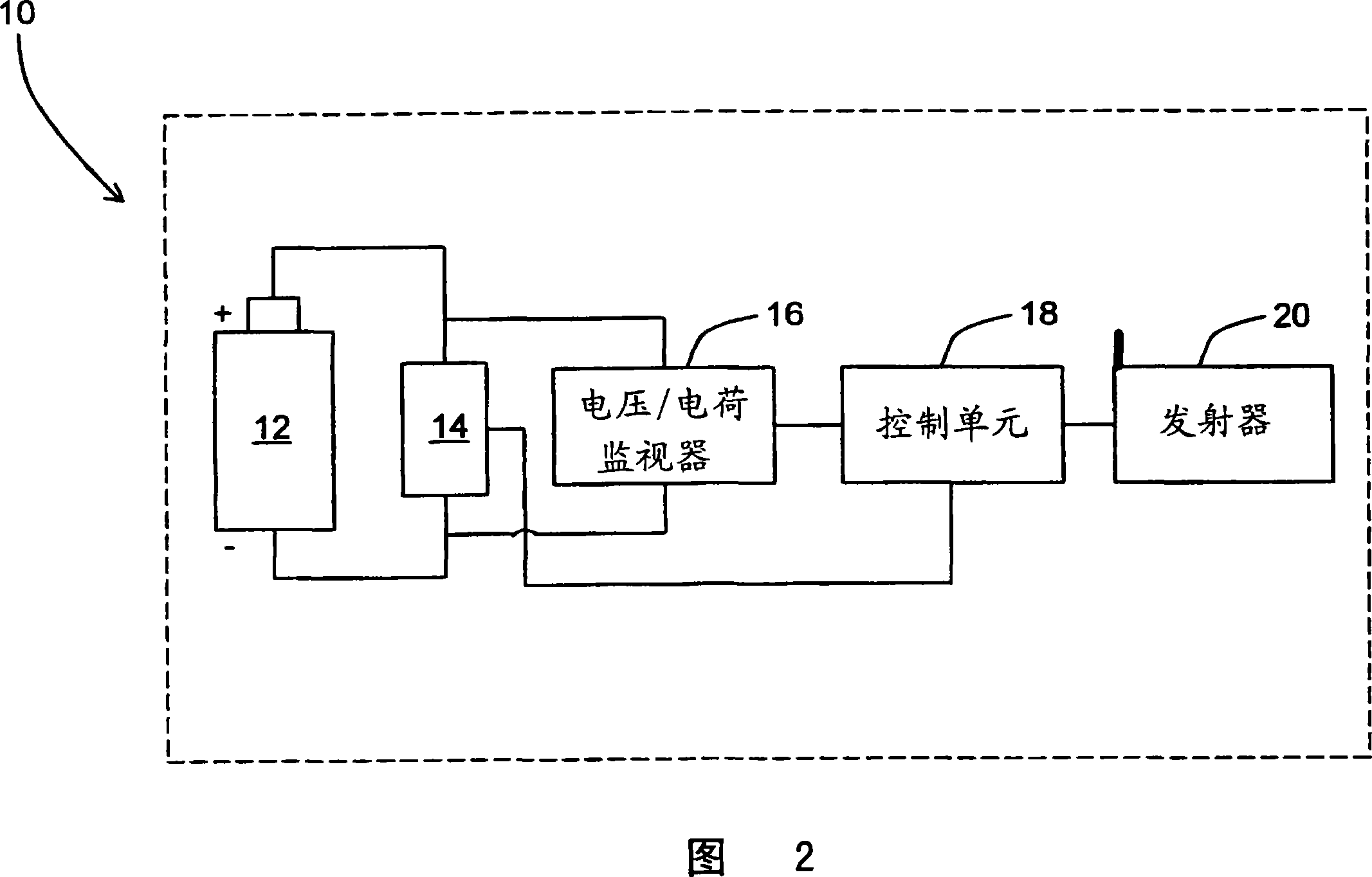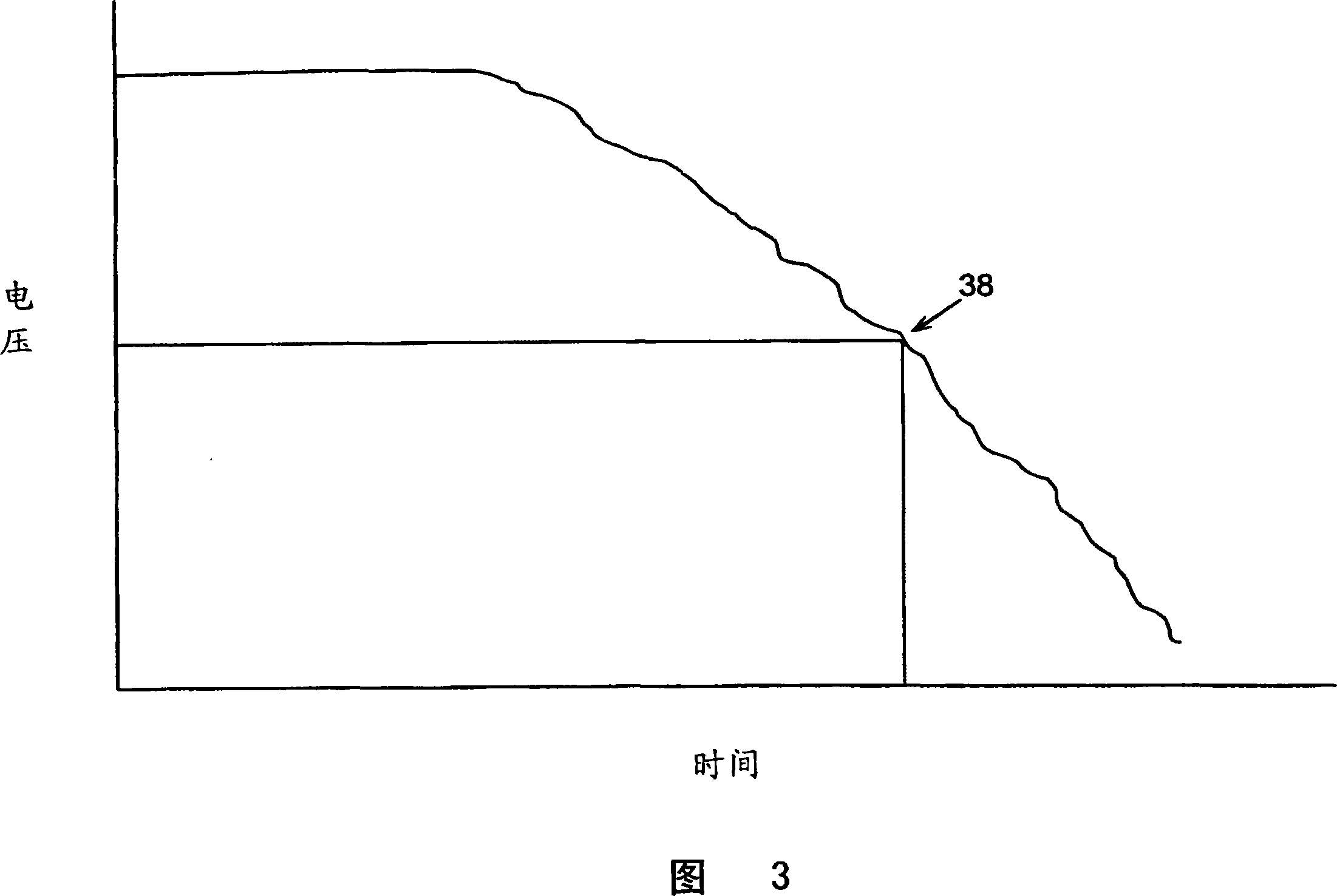Wireless battery status management for medical devices
A medical and wireless technology, applied in the field of wirelessly controlled drug delivery equipment, can solve problems such as insufficient battery power and failure, and achieve good battery management, increased safety, and good reliability.
- Summary
- Abstract
- Description
- Claims
- Application Information
AI Technical Summary
Problems solved by technology
Method used
Image
Examples
Embodiment Construction
[0022] Referring to Figure 1, a wireless medical component 10 is used in a clinical manner. Because the unit 10 is wireless, the unit 10 has the advantage of being mobile and not fixed to a certain room or location. Since the unit 10 still uses power to perform its functions or communicate, it has a battery or other portable power source. Referring to Figure 2, component 10 is shown in greater detail. The unit 10 is powered by a rechargeable power source or battery 12 . Preferably, the battery 12 is rechargeable so that a user can plug the unit 10 into a docking station to recharge it when not in use. It should be understood that conventional non-rechargeable batteries are also contemplated, although they are somewhat inconvenient. The battery 12 provides power to a functional component 14 such as an electrocardiogram sensor, pulse sensor, blood oxygen sensor, blood measurement sensor, brain wave sensor, temperature sensor, perfusion pump, IV drip controller, patient identi...
PUM
 Login to View More
Login to View More Abstract
Description
Claims
Application Information
 Login to View More
Login to View More - R&D
- Intellectual Property
- Life Sciences
- Materials
- Tech Scout
- Unparalleled Data Quality
- Higher Quality Content
- 60% Fewer Hallucinations
Browse by: Latest US Patents, China's latest patents, Technical Efficacy Thesaurus, Application Domain, Technology Topic, Popular Technical Reports.
© 2025 PatSnap. All rights reserved.Legal|Privacy policy|Modern Slavery Act Transparency Statement|Sitemap|About US| Contact US: help@patsnap.com



